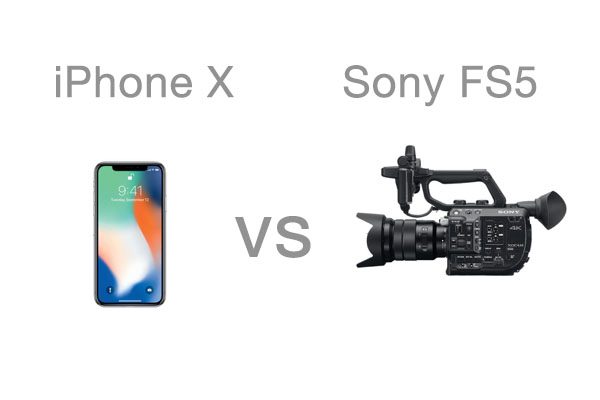Okay, we know that to the professionals, this might be a silly test. But with more and more creatives looking to create content, your phone isn’t a bad option and we wanted to prove it. The iPhone X is a solid video camera with the capability to capture beautiful footage. How does it match up to a professional cinema camera though? We decided to shoot a short in downtown Tacoma to see how they match up.
Pros and Cons
While both these cameras have their strengths and their weaknesses, we were really impressed by the quality of the iPhone X. Considering that you have a camera that can shoot slow motion and 4K inside your pocket, is pretty darn amazing. However, the Sony FS5 still offers that reliable and manual feel that allows filmmakers to have full control of what they are filming. Also, when shooting handheld, the added size allows for less shaky footage. The FS5 also has better dynamic range and depth of field (due to the option to mount exterior glass). Some of the downsides of the FS5 are the mobility and ease of use. Due to its large size, it can be a bit of pain to lug around when shooting and if you have never used a cinema camera before, it can be confusing to use. In contrast, the iPhone is such a powerhouse considering its size. You can literally pull out the iPhone, hit record, and start getting some great looking footage. So if you aren’t totally familiar with all the manual setting on a higher end camera, the iPhone will be breeze to use.
Advantages of iPhone X
Lightweight and small
Easy to operate
Full auto feature
Great colors with no editing
Different shooting options (4k, 120fps)
Advantages of Sony FS5
Full manual control
Modular with higher end equipment
Option to change lenses
Built in ND filter
SLOG profiles
Dynamic Range
Comera Movement
Regardless of what camera you use (phone, DSLR, Cinema), camera movement is crucial for your films. Camera movement is what keeps the dynamic of the video engaging for your audience and can really take your films to the next level. Adding even just the slightest movement is far better than a static shot for a prolonged period of time (interviews). For the short that we shot, we used the Rhino Slider EVO. We bring this slider with us to all of our shoots due to its reliability and ease of use. It only takes a couple seconds to fire it up and it gets the job done. Sliders are great tools for reveal, push, pull, and B-roll shots. Having a motorized slider with us instead of a hand-pushing slider, makes our workflow much faster and the shots come out way cleaner. No warp stabilizer is needed in post when using a motorized slider. If you want to learn more about the Rhino Slider EVO.
In Conclusion
We cannot really say the FS5 is better than the iPhone X and vice versa. They are both truly amazing in their own specific ways. The real questions to ask are, “what type of filmmaker are you?” and “how knowledgeable are you in film making”? If you have never owned a DSLR or mirrorless camera, you should definitely consider getting good at using your smartphone first. Mobile filmmaking is booming right now and even some well known professionals still use their phones. There are plenty of apps and equipment that you can use with your iPhone to make better films. If you are someone who does not make videos professionally (yet) and want to start making films as a hobby, the iPhone route is for you. In contrast, if you already own a higher end camera and know how to operate with full manual controls, you should look into getting a cinema camera for your productions. Having a cinema camera like an FS5 really can take your films to the next level and land you more professional gigs. With all this being said, at the end of the day, the best gear is the gear you always have with you. And the most important part about filmmaking is the story, which you can do beautifully on both an iPhone and Cinema Camera.
Article from: Rhino Slider

